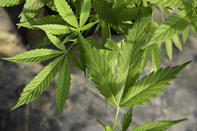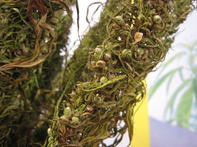Hemp (Cannabis sativa) is a versatile plant used for textiles, fibre, oil and as a food source. It is often mistaken for a drug because of its relation to its intoxicating cousin: marijuana or ‘dagga’ (Cannabis indica).

Industrial hemp is produced from strains of Cannabis sativa L. that contain less than 0.1 - 0.3% THC - permissible levels of THC vary for each country. ‘Hemp’ is, therefore, the term for cannabis plants that are grown for non-drug use.
Marijuana, hemp and cannabis are common names for plants of the genus Cannabis. Cannabis contains more than 110 cannabinoids, which include delta-9-tetrahydrocannabinol (THC), the intoxicating and psychoactive cannabinoid in marijuana. THC is known for its appetite-stimulating, pain-relieving and euphoric properties.
The THC content of cannabis is the reason why hemp production is regulated all over the world. However, hemp plants simply don’t produce enough THC to have an intoxicating effect.
Hemp and Cannabinoids

Cannabinoids are found in the human body and are essential for the optimum functioning of the body. They are chemical structures manufactured by plants (phytocannabinoids) and in the human body (endocannabinoids). These structures, together with the cannabinoid receptors in the brain, form part of the endocannabinoid system in the human body. This endocannabinoid system controls the release of neurotransmitters, assists in pain perception and is involved in heart and blood function, the digestive system as well as liver functions.
Thus far consumers have only been interested in the most abundant cannabinoids in the cannabis flower: Cannabidiol (CBD) and tetrahydrocannabinol (THC). CBD is found in the upper parts of the hemp plant and in hemp flowers and is extracted to produce a CBD-rich oil without intoxicating effects.
Other cannabinoids include Cannabigerol (CBG), cannabichromene (CBC) and cannabinol (CBN). Their potential use is still being studied but indicates the possible treatment of use for inflammatory diseases and as a sleeping aid.
Hemp and the Law
In South Africa, hemp is still regarded as a drug. It is regulated by the Department of Health. While the Medicine and Related Substances Act are the legislation involved in controlling the cultivation and processing of hemp in South Africa. Permits for the cultivation of low-THC cannabis for industrial purposes may be issued by the Director-General of Health in terms of Section 22A(9) (a) (i) of the Medicines Act.
Permits are issued by the South African Health Products Regulatory Authority (SAHPRA) which replaced the Medicines Control Council (MCC). SAHPRA falls under the Department of Health ministry. Application forms for the production of hemp can be obtained from the SAHPRA offices.
Permits issued for hemp production are still only for ‘research purposes’ which means that the commercialisation of hemp production is still rather vague, a sentiment conveyed by Gill Staniland, a founding member of Cannabis Industry Development Cooperative of the Western Cape (CIDCWC).
Hemp production has been legal in the United States since the passing of the Agricultural Improvement Act in 2018. However, hemp producers must still abide with state agricultural laws as well as with the 2014 U.S. Agricultural Act and obtain permits issued by local departments of agriculture.
With the legalisation of the 2018 Farm Bill in the United States, the production and transfer of hemp over state lines have increased the demand for both hemp and cannabidiol (CBD) products.
By Marinda Louw